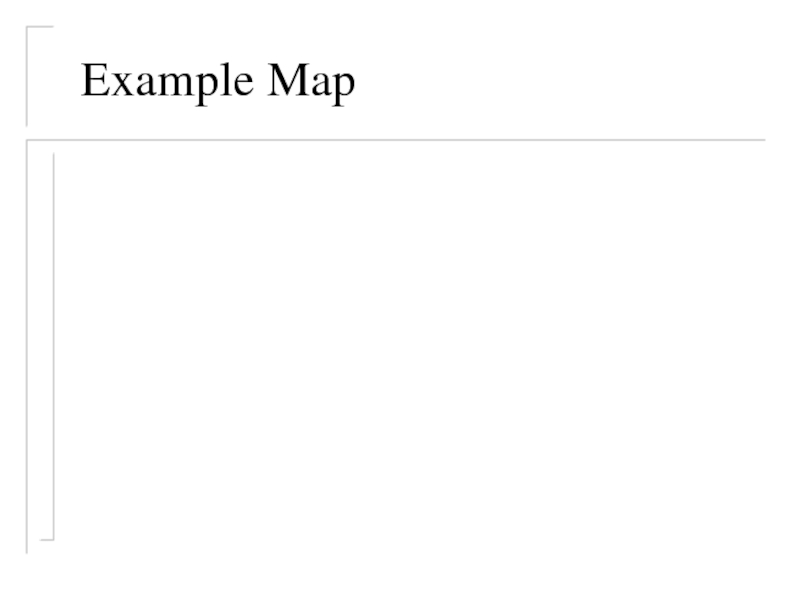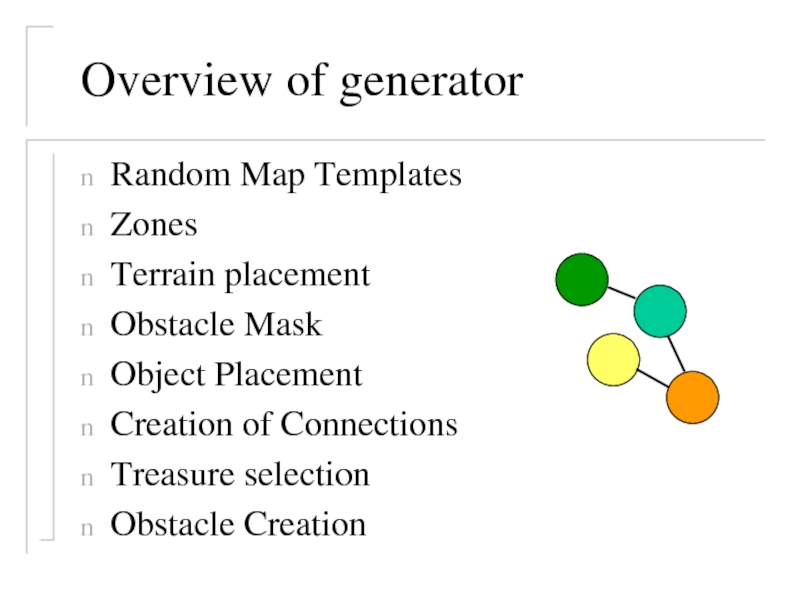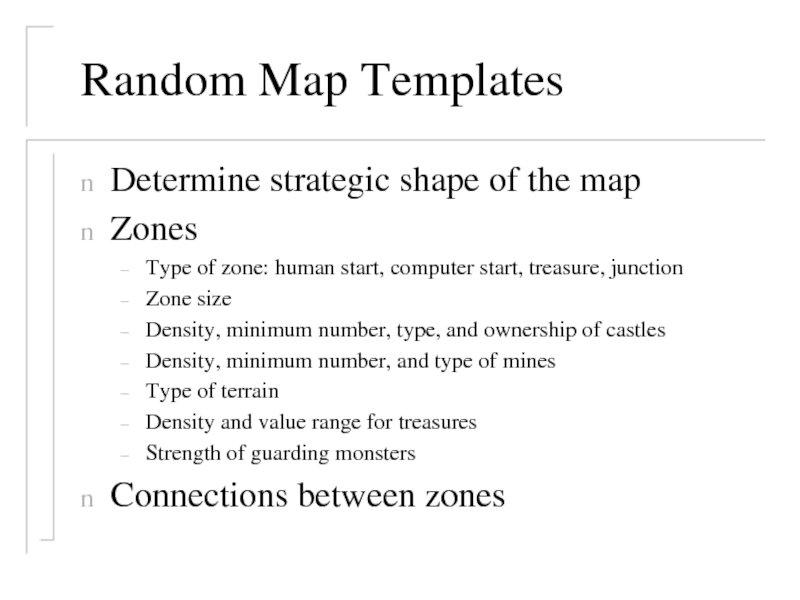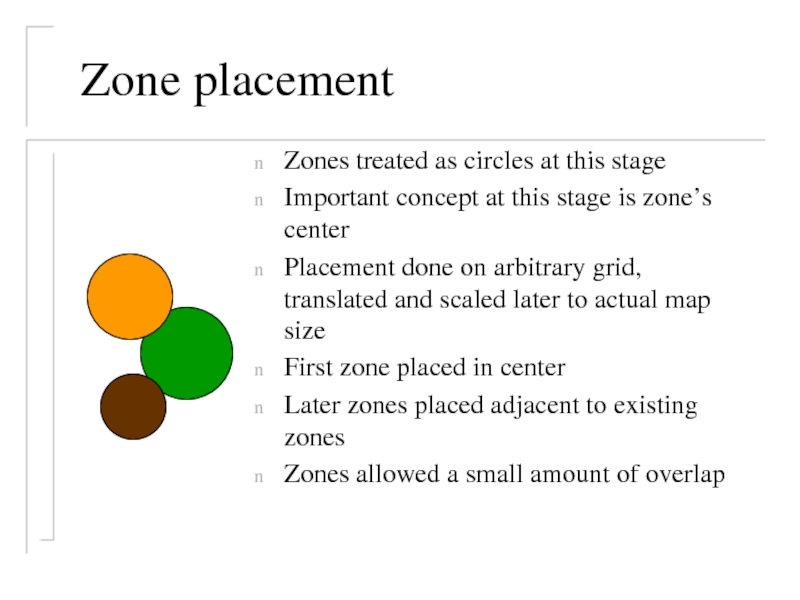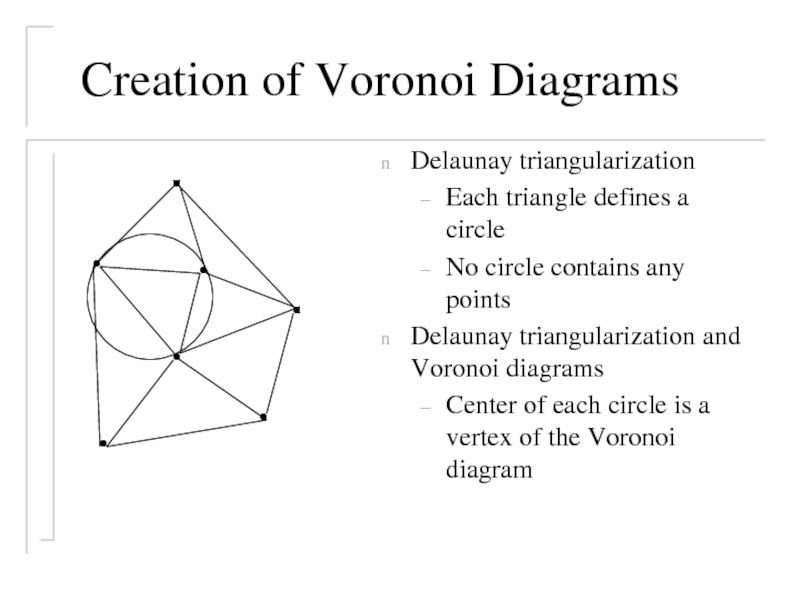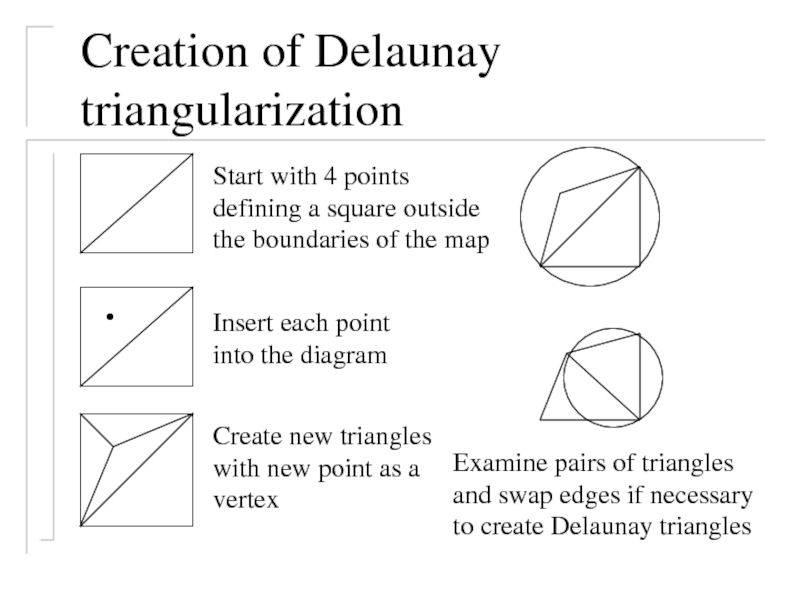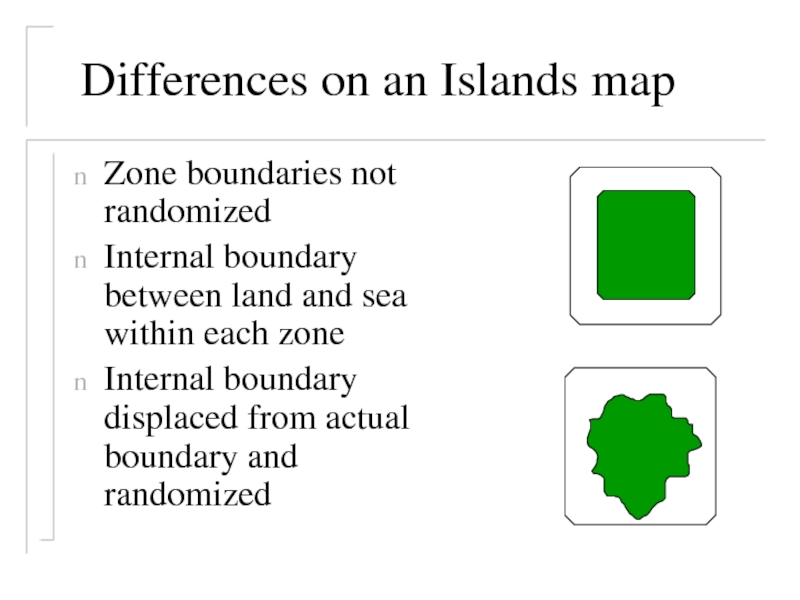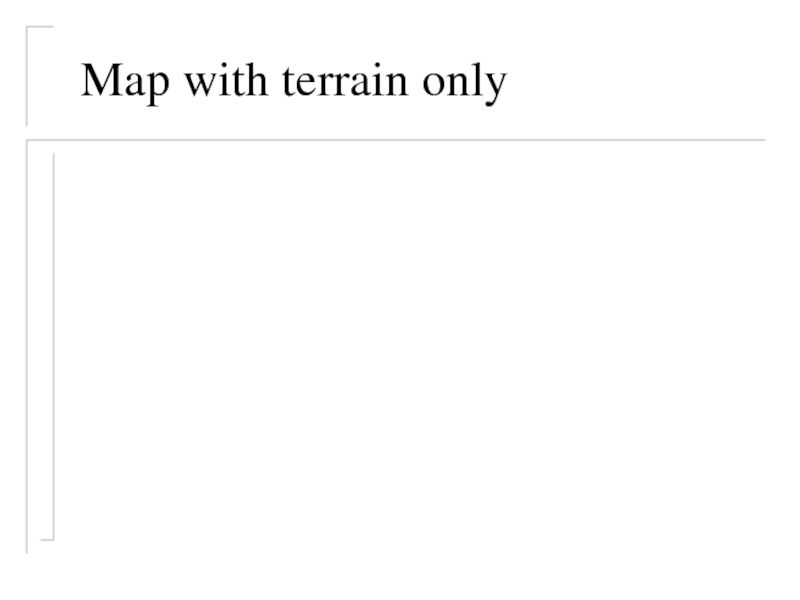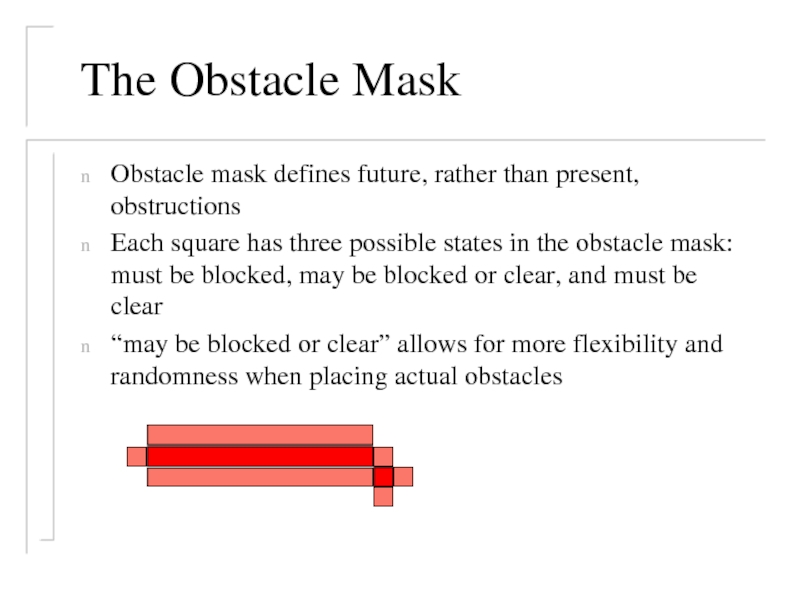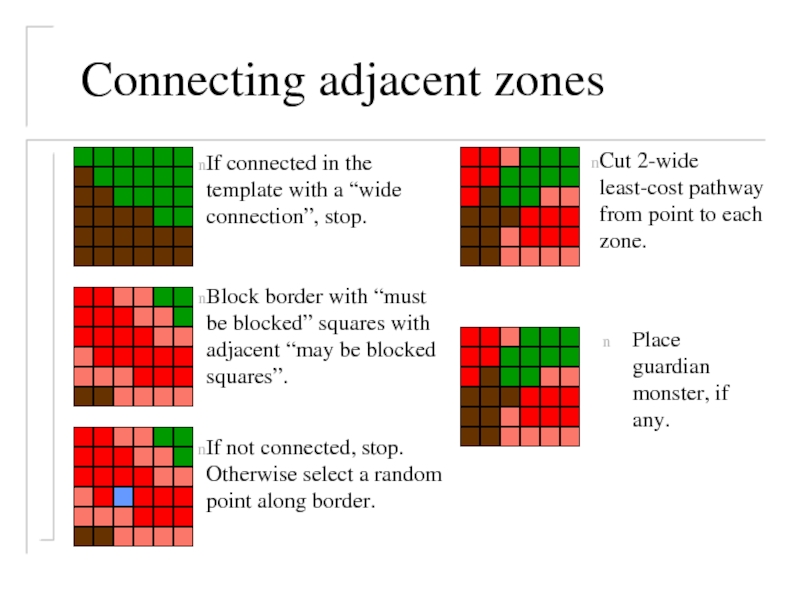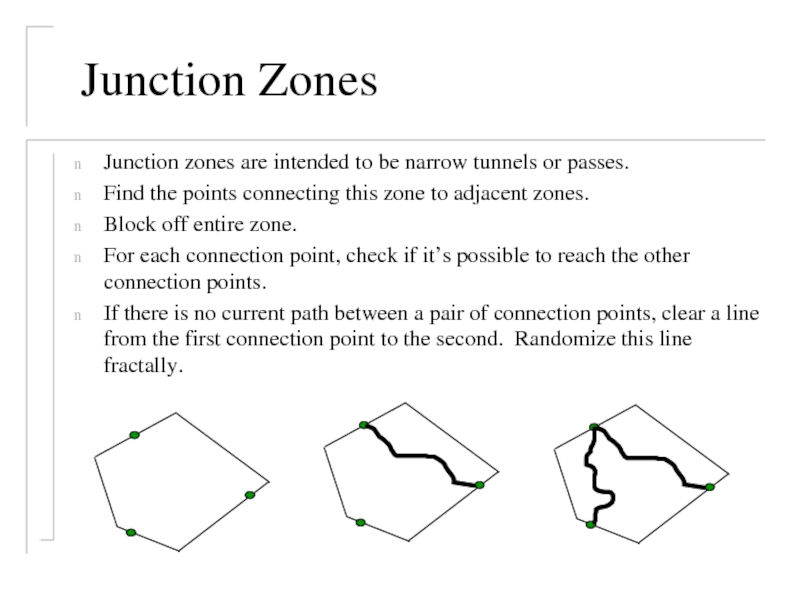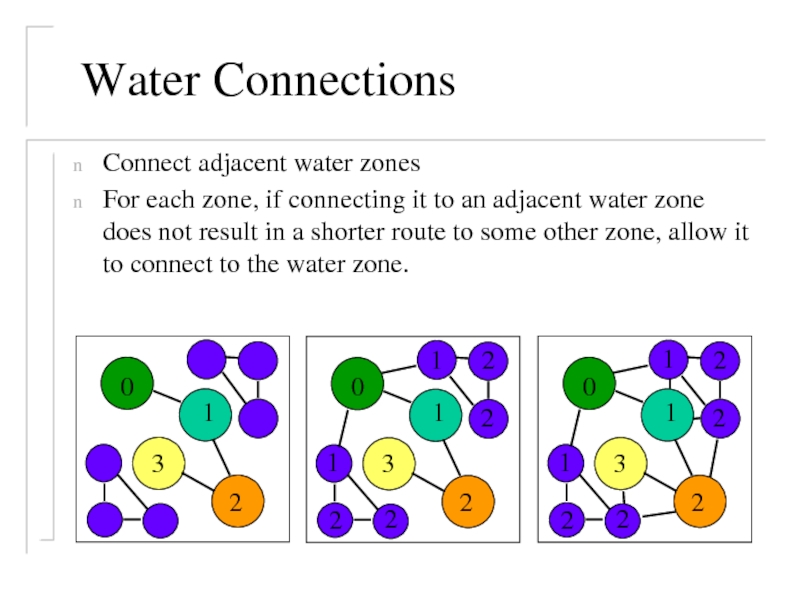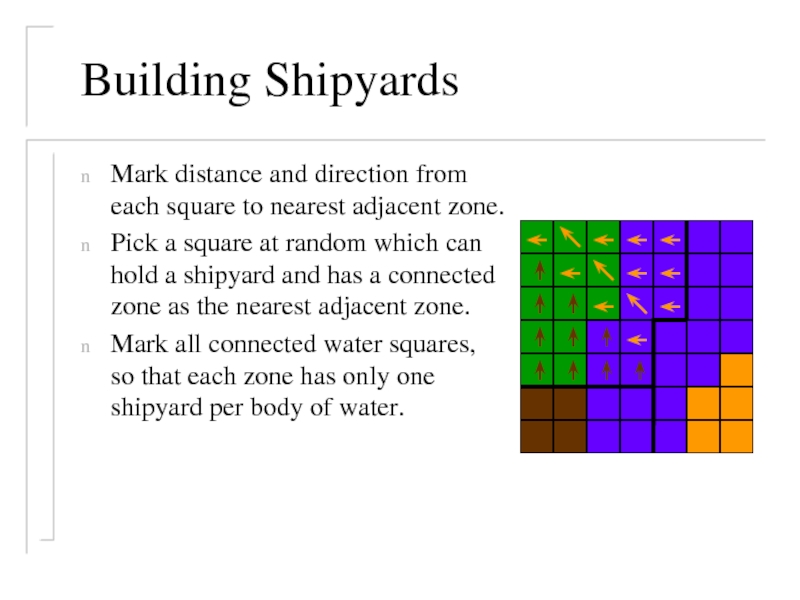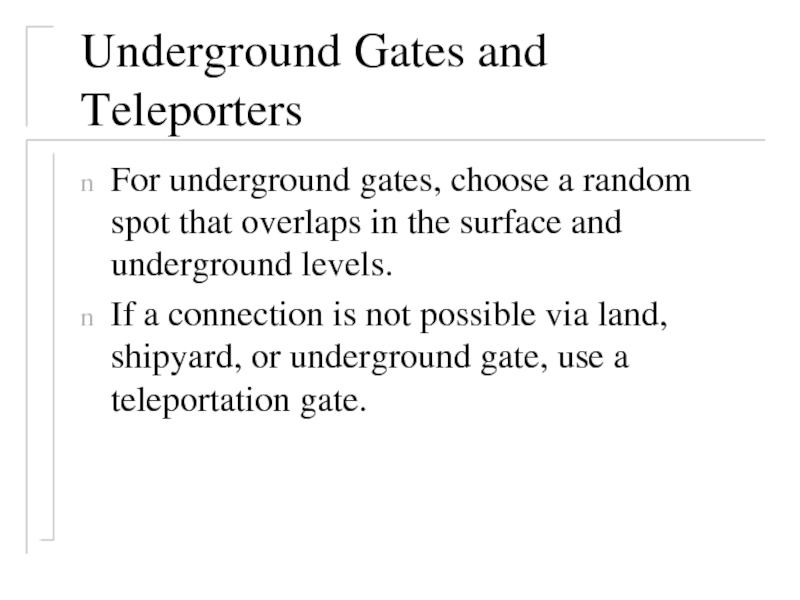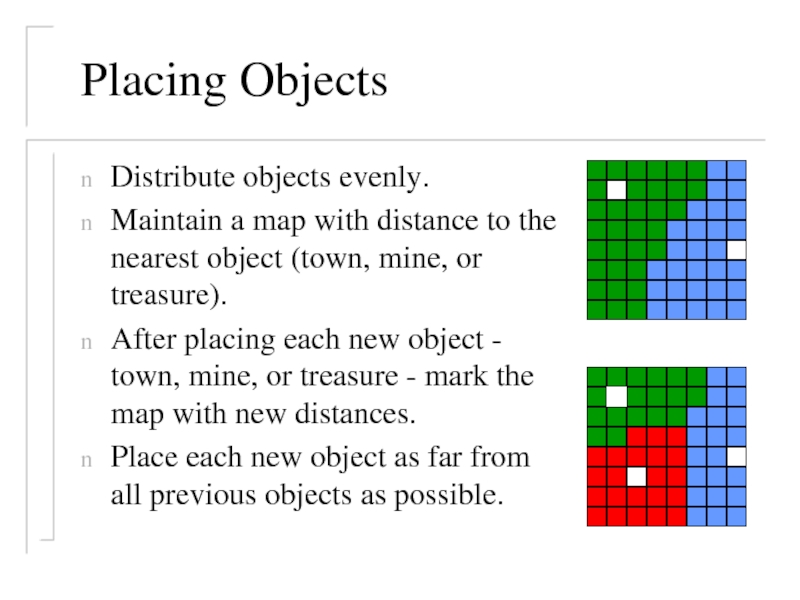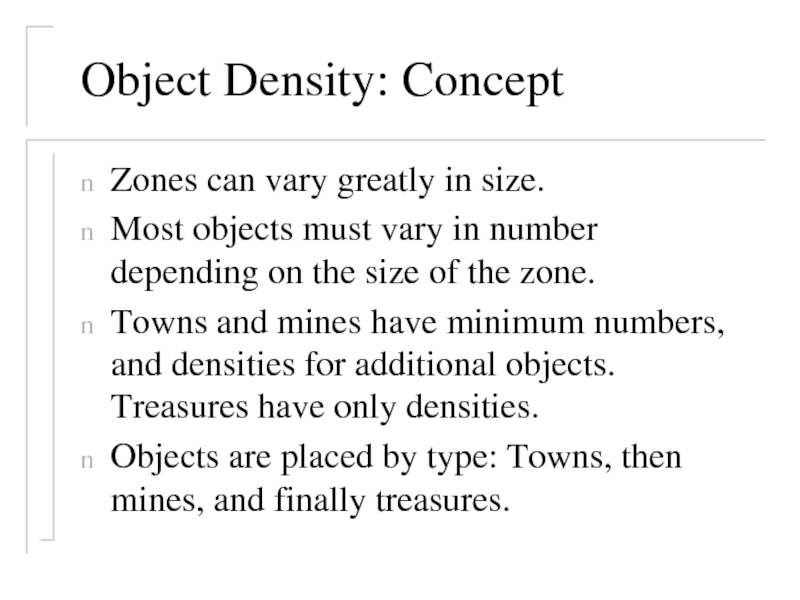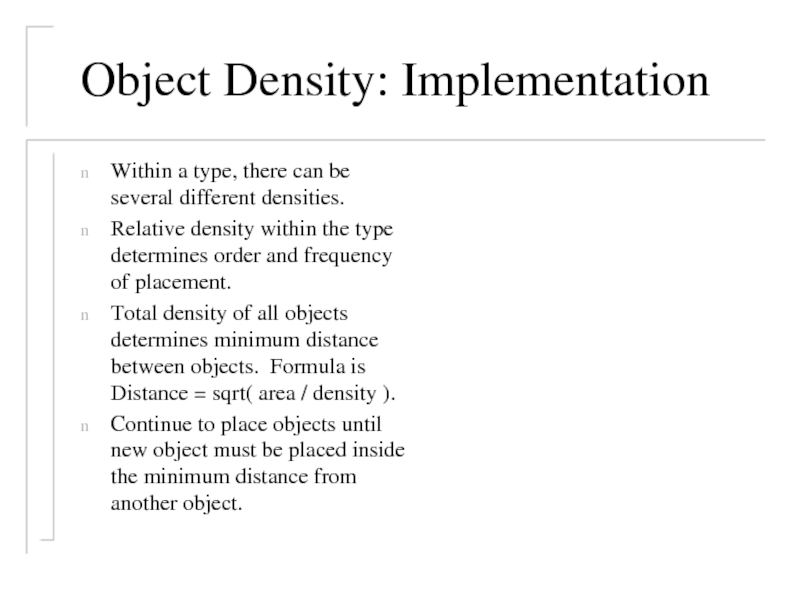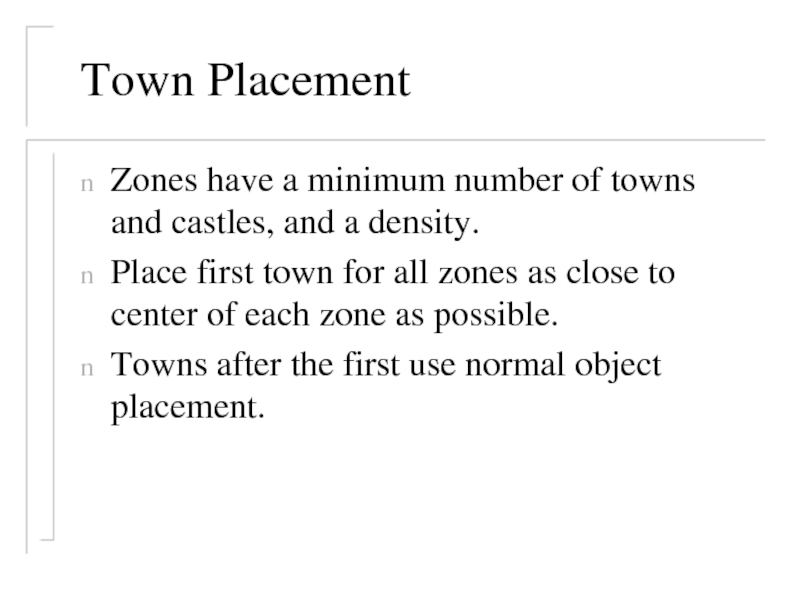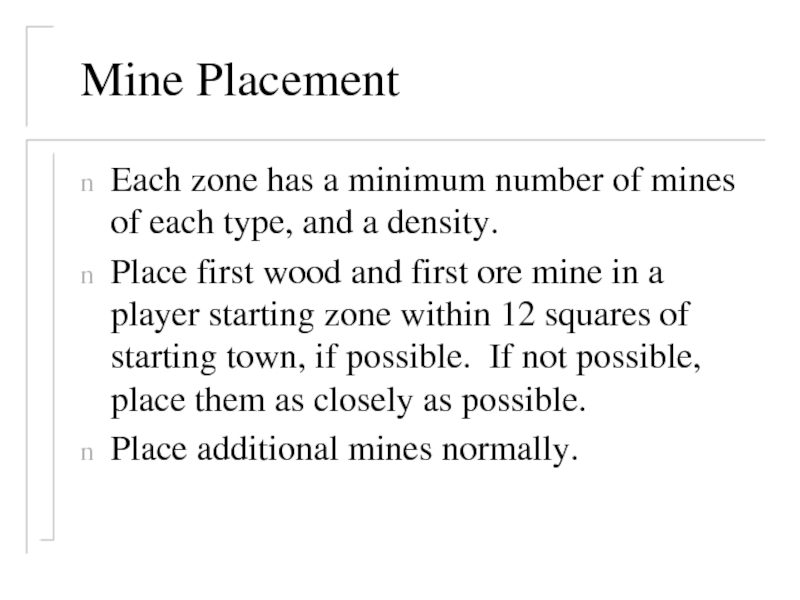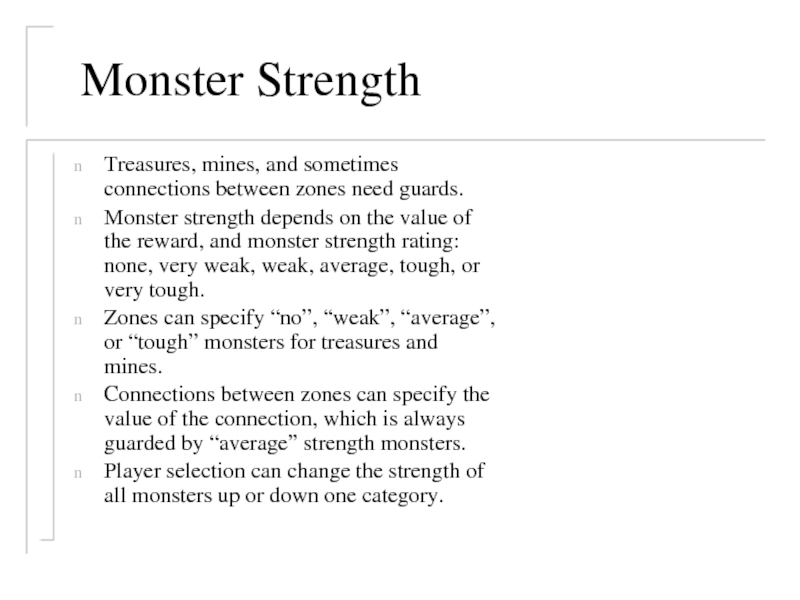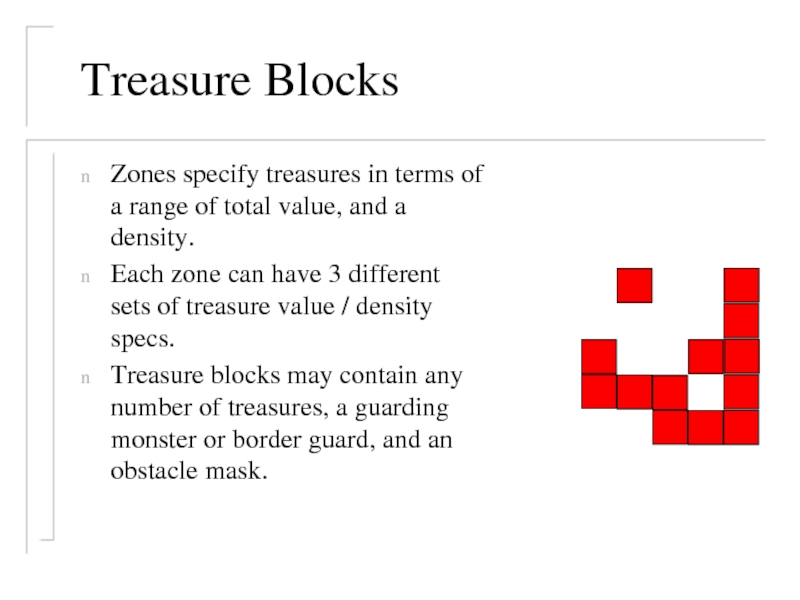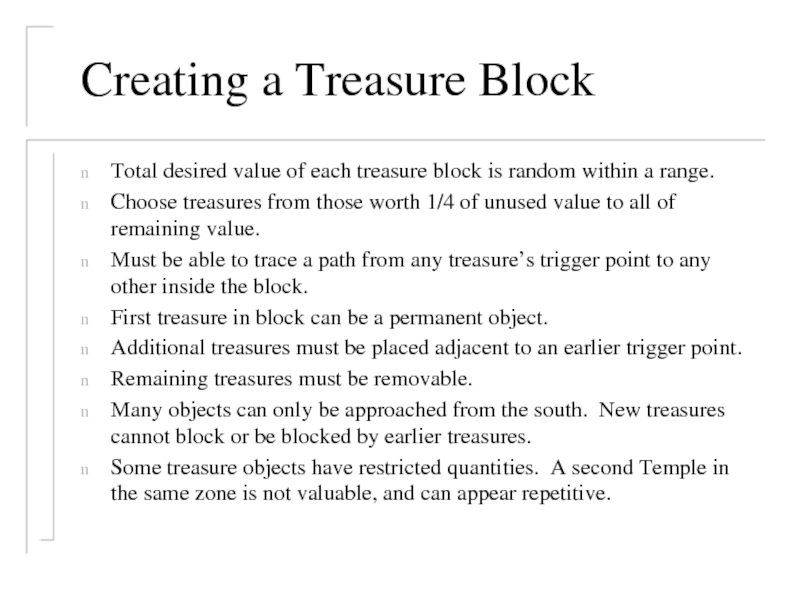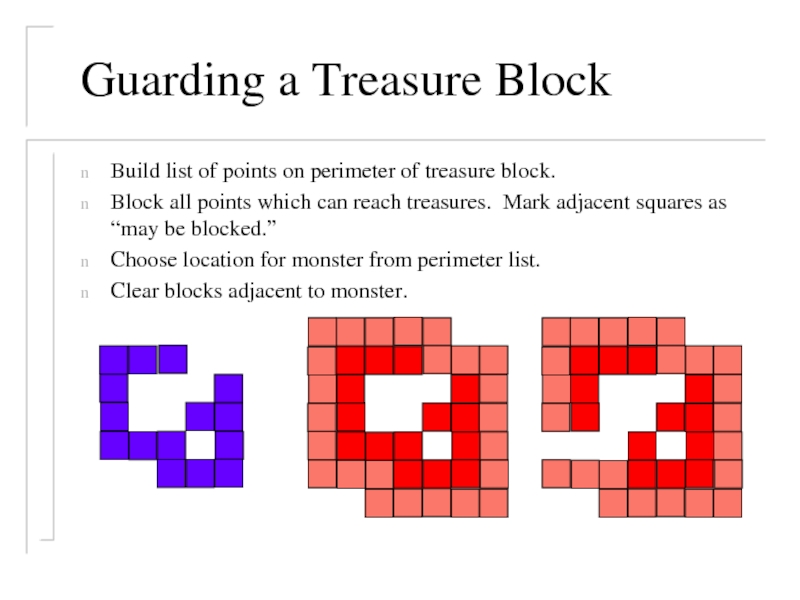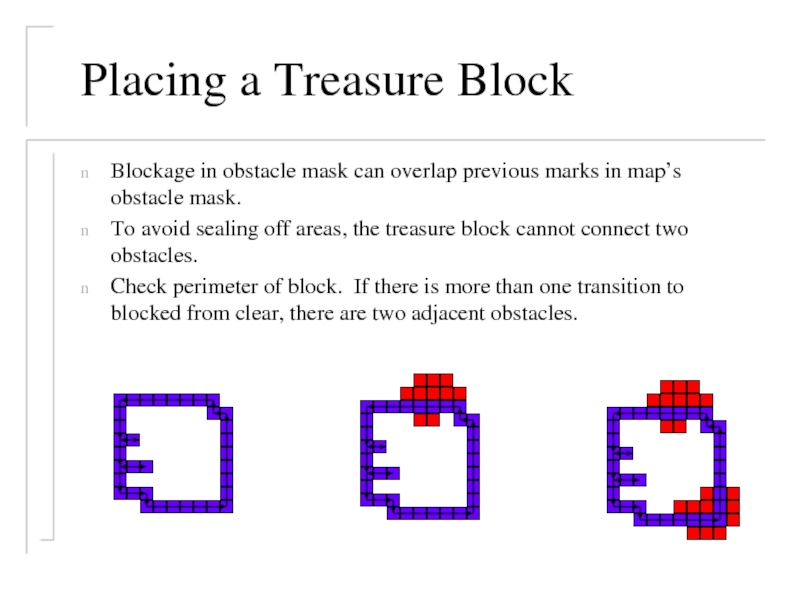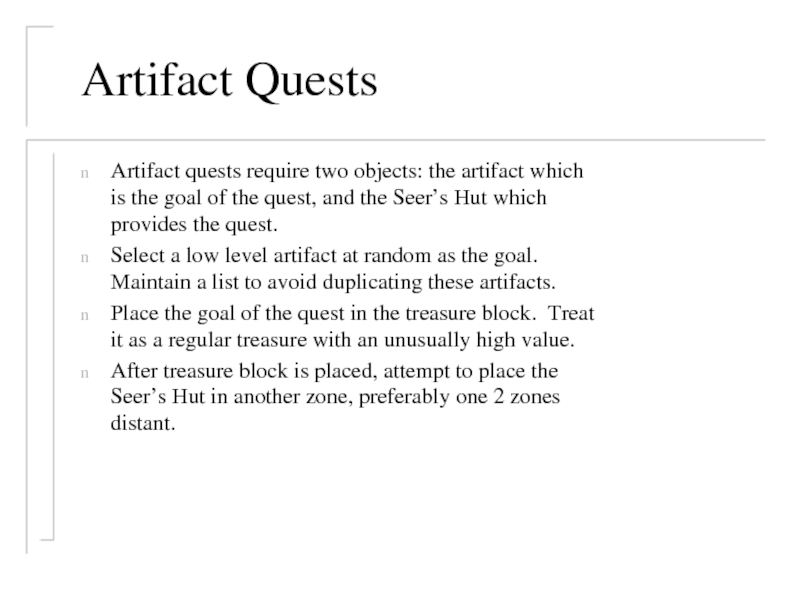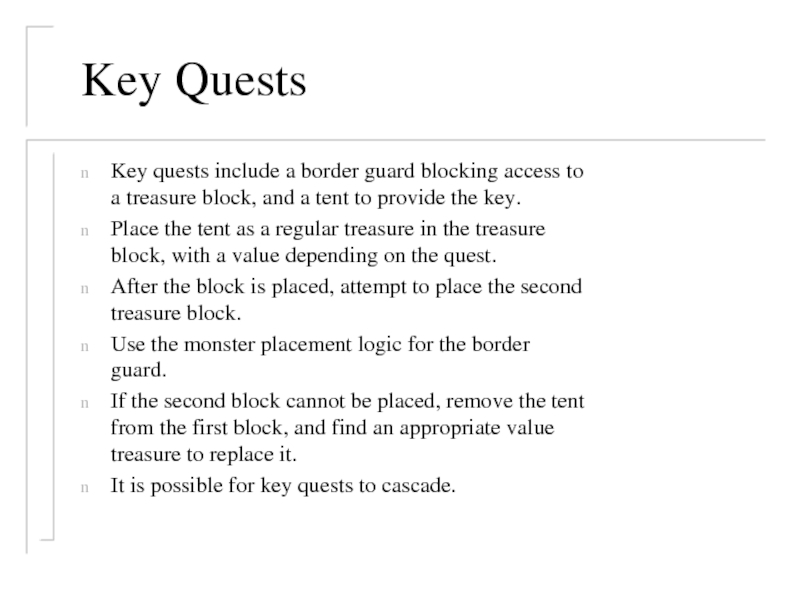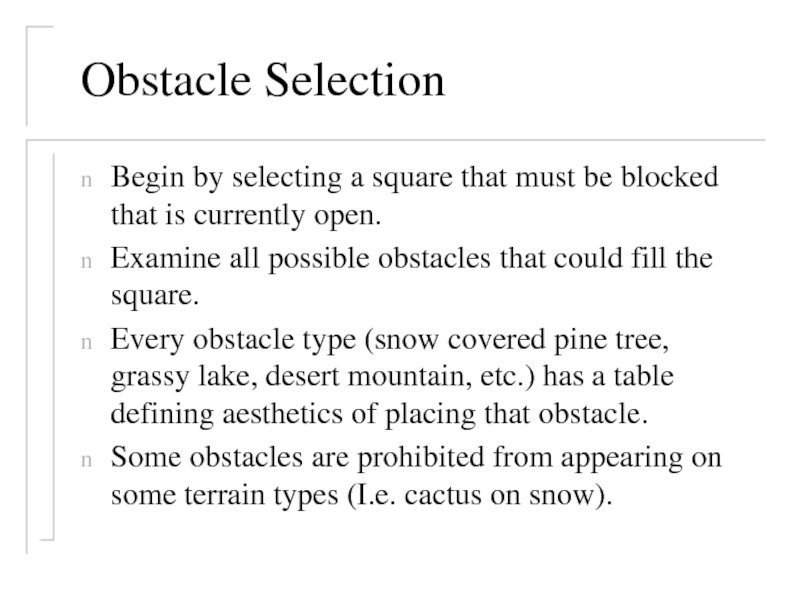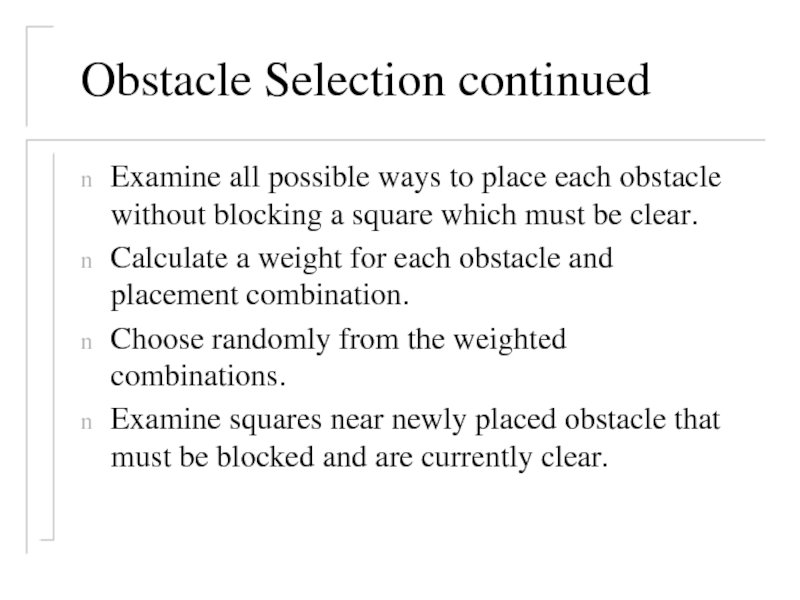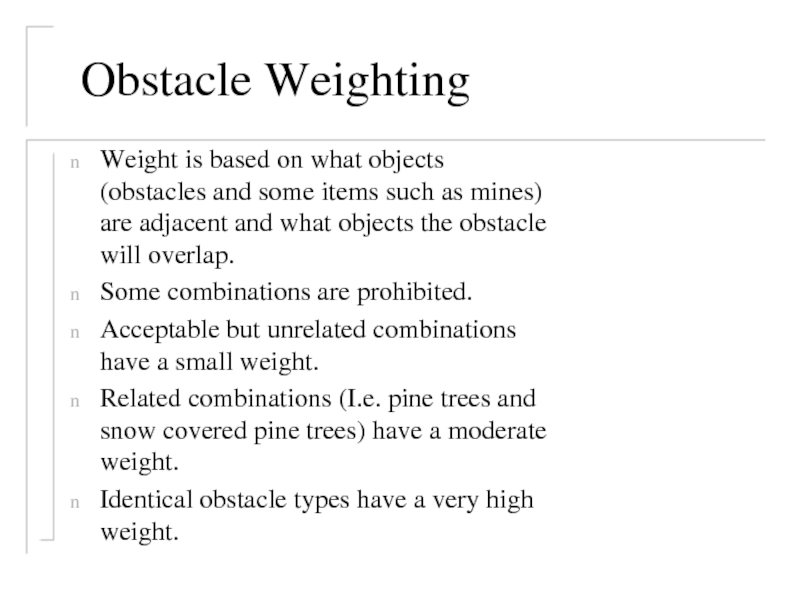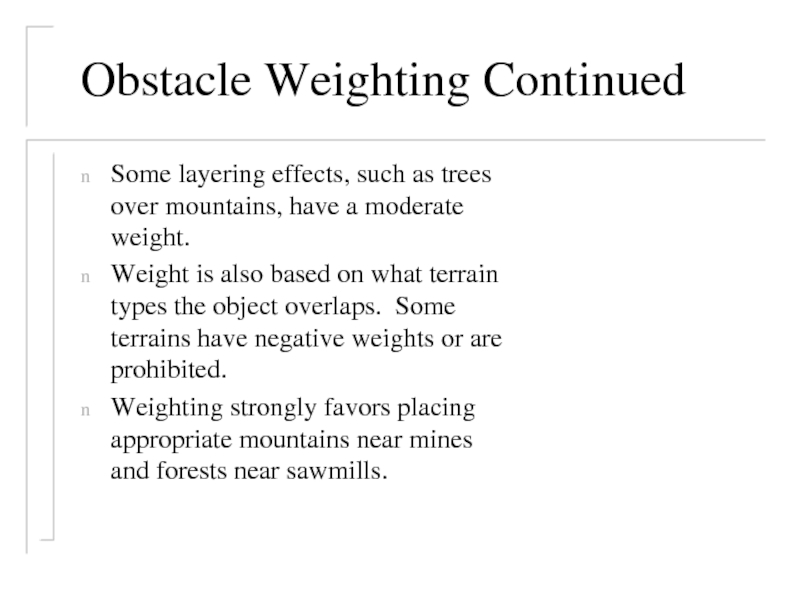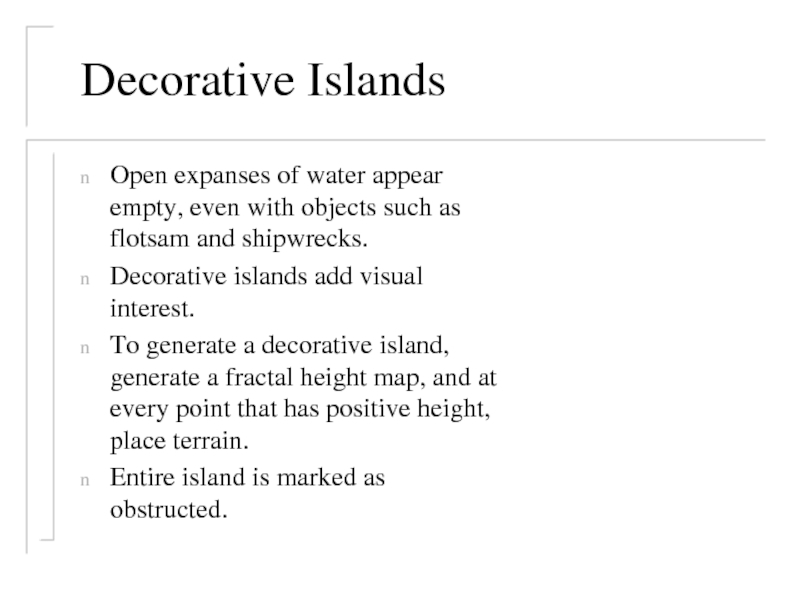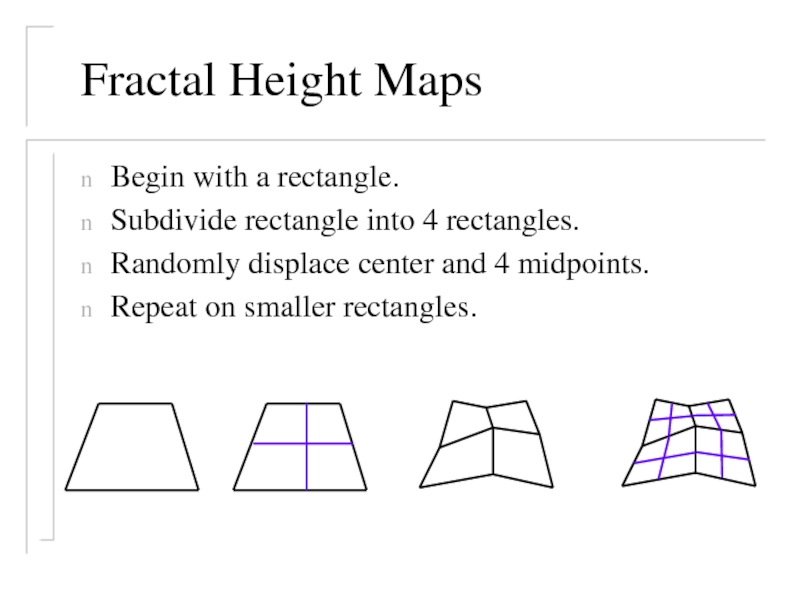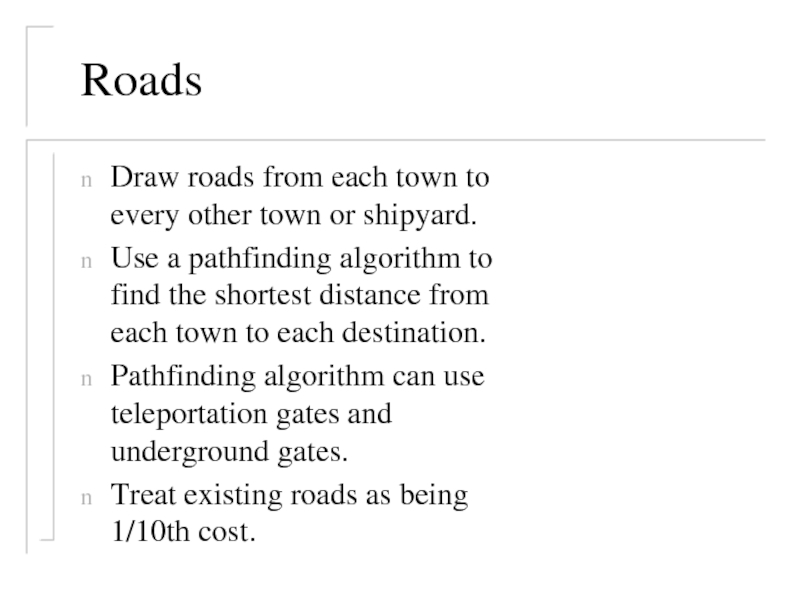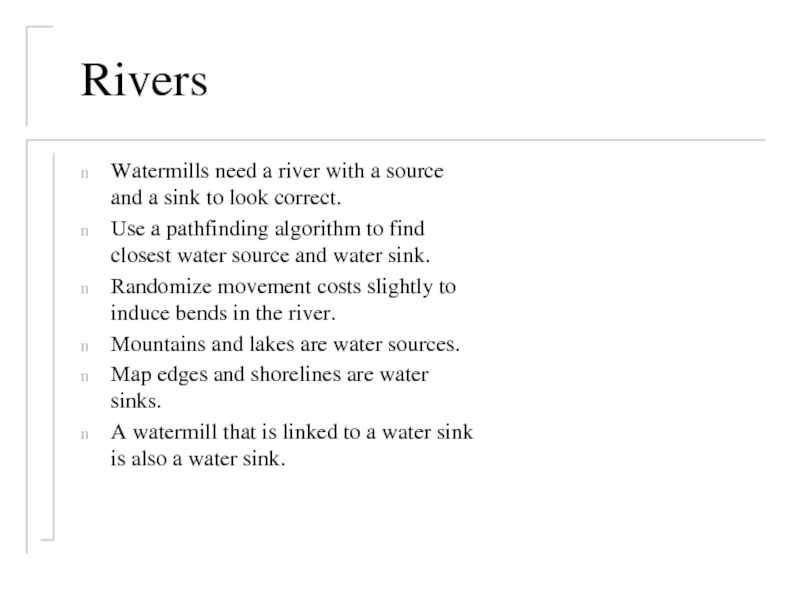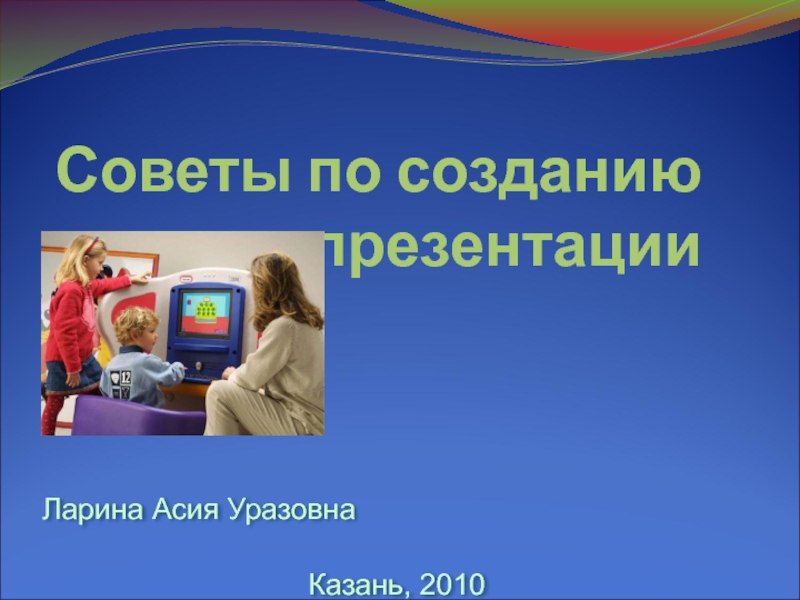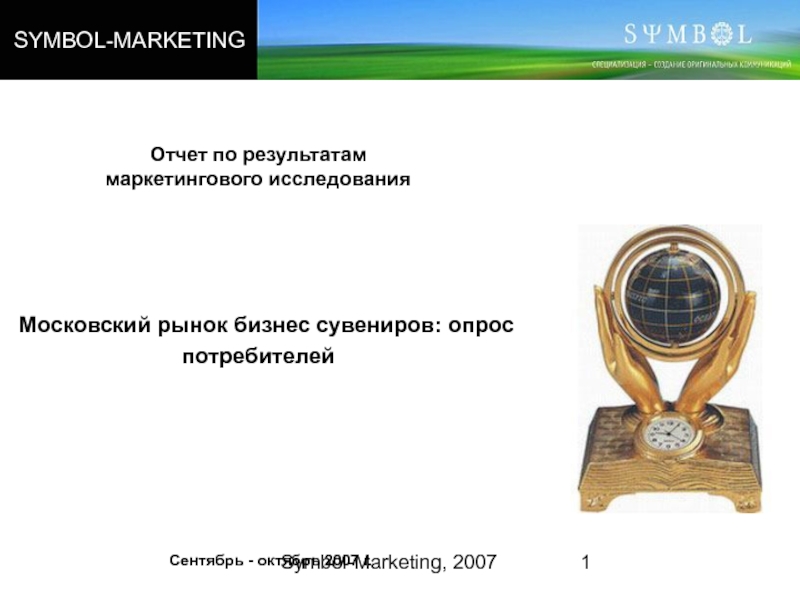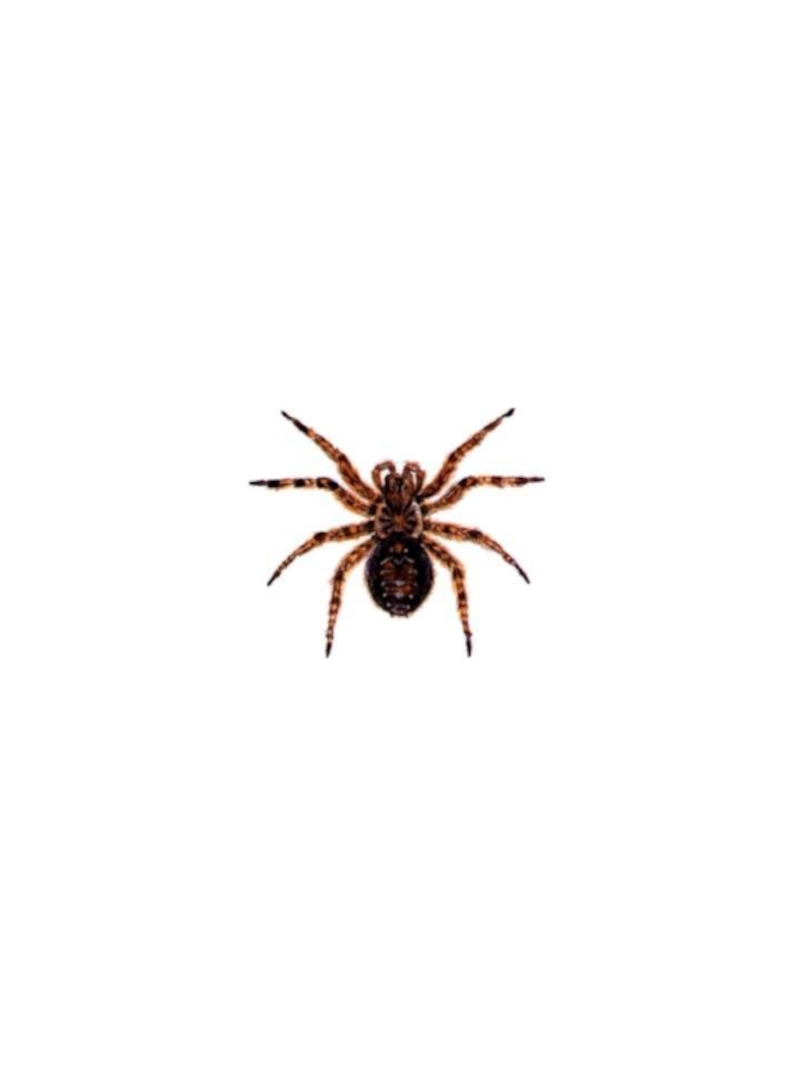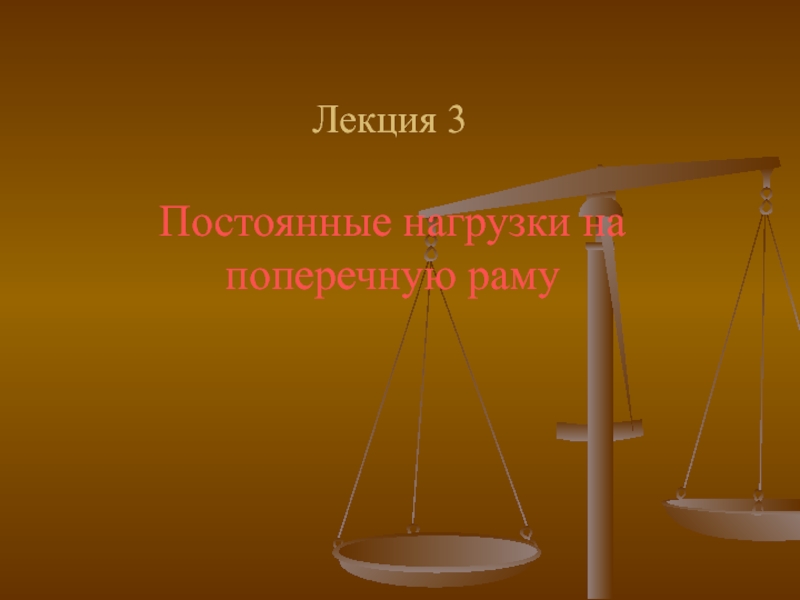- Главная
- Разное
- Дизайн
- Бизнес и предпринимательство
- Аналитика
- Образование
- Развлечения
- Красота и здоровье
- Финансы
- Государство
- Путешествия
- Спорт
- Недвижимость
- Армия
- Графика
- Культурология
- Еда и кулинария
- Лингвистика
- Английский язык
- Астрономия
- Алгебра
- Биология
- География
- Детские презентации
- Информатика
- История
- Литература
- Маркетинг
- Математика
- Медицина
- Менеджмент
- Музыка
- МХК
- Немецкий язык
- ОБЖ
- Обществознание
- Окружающий мир
- Педагогика
- Русский язык
- Технология
- Физика
- Философия
- Химия
- Шаблоны, картинки для презентаций
- Экология
- Экономика
- Юриспруденция
The heroes 3. Random map. Generator презентация
Содержание
- 1. The heroes 3. Random map. Generator
- 2. Goals Maps from 36x36x1 to 144x144x2 Strategically
- 3. Example Map
- 4. Overview of generator Random Map Templates Zones
- 5. Random Map Templates Determine strategic shape of
- 6. Zone placement Zones treated as circles at
- 7. Zone Placement continued Minimize overall width and
- 8. Conversion of zones to terrain Basic zone
- 9. Creation of Voronoi Diagrams Delaunay triangularization Each
- 10. Creation of Delaunay triangularization Start with
- 11. Creation of Zone edges Fractal randomization of
- 12. Differences on an Islands map Zone boundaries
- 13. Map with terrain only
- 14. The Obstacle Mask Obstacle mask defines future,
- 15. Decorative obstacles Instead of placing decorative obstacles,
- 16. Insuring all areas are reachable An “A*”
- 17. Connecting adjacent zones Place guardian monster, if
- 18. Junction Zones Junction zones are intended to
- 19. Water Connections Connect adjacent water zones For
- 20. Building Shipyards Mark distance and direction from
- 21. Underground Gates and Teleporters For underground gates,
- 22. Placing Objects Distribute objects evenly. Maintain a
- 23. Object Density: Concept Zones can vary greatly
- 24. Object Density: Implementation Within a type, there
- 25. Town Placement Zones have a minimum number
- 26. Mine Placement Each zone has a minimum
- 27. Monster Strength Treasures, mines, and sometimes connections
- 28. Selecting Monsters Template specifies which alignments are
- 29. Treasures Any object which rewards the player
- 30. Treasure Blocks Zones specify treasures in terms
- 31. Creating a Treasure Block Total desired value
- 32. Guarding a Treasure Block Build list of
- 33. Placing a Treasure Block Blockage in obstacle
- 34. Artifact Quests Artifact quests require two objects:
- 35. Key Quests Key quests include a border
- 36. Obstacle Selection Begin by selecting a square
- 37. Obstacle Selection continued Examine all possible ways
- 38. Obstacle Weighting Weight is based on what
- 39. Obstacle Weighting Continued Some layering effects, such
- 40. Decorative Islands Open expanses of water appear
- 41. Fractal Height Maps Begin with a rectangle.
- 42. Roads Draw roads from each town to
- 43. Rivers Watermills need a river with a
- 44. Questions?
Слайд 2Goals
Maps from 36x36x1 to 144x144x2
Strategically balanced.
Natural land shapes.
Castles, Monsters, Treasures.
Aesthetically pleasing
Rivers and roads
Слайд 4Overview of generator
Random Map Templates
Zones
Terrain placement
Obstacle Mask
Object Placement
Creation of Connections
Treasure selection
Obstacle
Слайд 5Random Map Templates
Determine strategic shape of the map
Zones
Type of zone: human
Zone size
Density, minimum number, type, and ownership of castles
Density, minimum number, and type of mines
Type of terrain
Density and value range for treasures
Strength of guarding monsters
Connections between zones
Слайд 6Zone placement
Zones treated as circles at this stage
Important concept at this
Placement done on arbitrary grid, translated and scaled later to actual map size
First zone placed in center
Later zones placed adjacent to existing zones
Zones allowed a small amount of overlap
Слайд 7Zone Placement continued
Minimize overall width and height of map
For two level
Maximize number of adjacencies to connected zones
Zone placement done 5 times, like “shaking a box”
Extra water and rock zones placed after normal zones
Слайд 8Conversion of zones to terrain
Basic zone shape depends on adjacent zones,
Starting zone boundaries determined by Voronoi diagram of zone centers
Слайд 9Creation of Voronoi Diagrams
Delaunay triangularization
Each triangle defines a circle
No circle contains
Delaunay triangularization and Voronoi diagrams
Center of each circle is a vertex of the Voronoi diagram
Слайд 10Creation of Delaunay triangularization
Start with 4 points defining a square outside
Insert each point into the diagram
Create new triangles with new point as a vertex
Examine pairs of triangles and swap edges if necessary to create Delaunay triangles
Слайд 11Creation of Zone edges
Fractal randomization of zone boundaries
begin with line defining
displace center by a random amount, up to 1/2 line length
repeat with two resulting lines
Слайд 12Differences on an Islands map
Zone boundaries not randomized
Internal boundary between land
Internal boundary displaced from actual boundary and randomized
Слайд 14The Obstacle Mask
Obstacle mask defines future, rather than present, obstructions
Each square
“may be blocked or clear” allows for more flexibility and randomness when placing actual obstacles
Слайд 15Decorative obstacles
Instead of placing decorative obstacles, the generator takes a negative
Initial state is “must be blocked” for every land square, and “must be clear” for water squares
Cut random paths, using a fractal method, through the obstruction mask
Like the edge roughening, except that the generator adds new, perpendicular lines at each stage
Слайд 16Insuring all areas are reachable
An “A*” based pathfinding algorithm determines the
Cost to move orthogonally into a square is 2, cost to move diagonally is 3. Cost to move from any zero-cost cost square to any open square is zero.
After determining distances, cut a least-cost path through the obstacle mask from any open square that is not connected to the main area.
Repeat until all open squares are connected.
0
0
0
0
0
2
0
0
0
2
2
3
4
2
3
4
3
5
5
6
4
6
5
7
8
6
6
8
7
9
10
8
10
11
0
0
0
0
0
0
0
0
2
2
0
0
0
0
0
2
0
0
0
2
2
3
4
0
3
4
2
5
3
4
0
4
0
4
2
2
0
2
0
2
0
0
0
0
2
2
0
0
0
0
0
0
0
0
0
0
0
0
0
0
0
0
0
Слайд 17Connecting adjacent zones
Place guardian monster, if any.
If connected in the template
Block border with “must be blocked” squares with adjacent “may be blocked squares”.
If not connected, stop. Otherwise select a random point along border.
Cut 2-wide least-cost pathway from point to each zone.
Слайд 18Junction Zones
Junction zones are intended to be narrow tunnels or passes.
Find
Block off entire zone.
For each connection point, check if it’s possible to reach the other connection points.
If there is no current path between a pair of connection points, clear a line from the first connection point to the second. Randomize this line fractally.
Слайд 19Water Connections
Connect adjacent water zones
For each zone, if connecting it to
0
2
1
3
0
2
1
3
1
2
2
1
2
2
0
2
1
3
1
2
2
1
2
2
Слайд 20Building Shipyards
Mark distance and direction from each square to nearest adjacent
Pick a square at random which can hold a shipyard and has a connected zone as the nearest adjacent zone.
Mark all connected water squares, so that each zone has only one shipyard per body of water.
Слайд 21Underground Gates and Teleporters
For underground gates, choose a random spot that
If a connection is not possible via land, shipyard, or underground gate, use a teleportation gate.
Слайд 22Placing Objects
Distribute objects evenly.
Maintain a map with distance to the nearest
After placing each new object - town, mine, or treasure - mark the map with new distances.
Place each new object as far from all previous objects as possible.
Слайд 23Object Density: Concept
Zones can vary greatly in size.
Most objects must
Towns and mines have minimum numbers, and densities for additional objects. Treasures have only densities.
Objects are placed by type: Towns, then mines, and finally treasures.
Слайд 24Object Density: Implementation
Within a type, there can be several different densities.
Relative
Total density of all objects determines minimum distance between objects. Formula is Distance = sqrt( area / density ).
Continue to place objects until new object must be placed inside the minimum distance from another object.
Слайд 25Town Placement
Zones have a minimum number of towns and castles, and
Place first town for all zones as close to center of each zone as possible.
Towns after the first use normal object placement.
Слайд 26Mine Placement
Each zone has a minimum number of mines of each
Place first wood and first ore mine in a player starting zone within 12 squares of starting town, if possible. If not possible, place them as closely as possible.
Place additional mines normally.
Слайд 27Monster Strength
Treasures, mines, and sometimes connections between zones need guards.
Monster strength
Zones can specify “no”, “weak”, “average”, or “tough” monsters for treasures and mines.
Connections between zones can specify the value of the connection, which is always guarded by “average” strength monsters.
Player selection can change the strength of all monsters up or down one category.
Слайд 28Selecting Monsters
Template specifies which alignments are legal for monsters in each
Desired number of monsters = guard value / value of individual monster.
Discard monsters for which quantity is less than the normal average for that monster.
Discard monsters for which quantity is greater than 100.
Слайд 29Treasures
Any object which rewards the player is a “treasure” object.
After placing
Value of treasure may depend on map conditions. Creature dwellings are much more valuable if map has corresponding towns.
Some treasures have several variations. Pandora’s Boxes may contain experience, gold, creatures, or spells.
Слайд 30Treasure Blocks
Zones specify treasures in terms of a range of total
Each zone can have 3 different sets of treasure value / density specs.
Treasure blocks may contain any number of treasures, a guarding monster or border guard, and an obstacle mask.
Слайд 31Creating a Treasure Block
Total desired value of each treasure block is
Choose treasures from those worth 1/4 of unused value to all of remaining value.
Must be able to trace a path from any treasure’s trigger point to any other inside the block.
First treasure in block can be a permanent object.
Additional treasures must be placed adjacent to an earlier trigger point.
Remaining treasures must be removable.
Many objects can only be approached from the south. New treasures cannot block or be blocked by earlier treasures.
Some treasure objects have restricted quantities. A second Temple in the same zone is not valuable, and can appear repetitive.
Слайд 32Guarding a Treasure Block
Build list of points on perimeter of treasure
Block all points which can reach treasures. Mark adjacent squares as “may be blocked.”
Choose location for monster from perimeter list.
Clear blocks adjacent to monster.
Слайд 33Placing a Treasure Block
Blockage in obstacle mask can overlap previous marks
To avoid sealing off areas, the treasure block cannot connect two obstacles.
Check perimeter of block. If there is more than one transition to blocked from clear, there are two adjacent obstacles.
Слайд 34Artifact Quests
Artifact quests require two objects: the artifact which is the
Select a low level artifact at random as the goal. Maintain a list to avoid duplicating these artifacts.
Place the goal of the quest in the treasure block. Treat it as a regular treasure with an unusually high value.
After treasure block is placed, attempt to place the Seer’s Hut in another zone, preferably one 2 zones distant.
Слайд 35Key Quests
Key quests include a border guard blocking access to a
Place the tent as a regular treasure in the treasure block, with a value depending on the quest.
After the block is placed, attempt to place the second treasure block.
Use the monster placement logic for the border guard.
If the second block cannot be placed, remove the tent from the first block, and find an appropriate value treasure to replace it.
It is possible for key quests to cascade.
Слайд 36Obstacle Selection
Begin by selecting a square that must be blocked that
Examine all possible obstacles that could fill the square.
Every obstacle type (snow covered pine tree, grassy lake, desert mountain, etc.) has a table defining aesthetics of placing that obstacle.
Some obstacles are prohibited from appearing on some terrain types (I.e. cactus on snow).
Слайд 37Obstacle Selection continued
Examine all possible ways to place each obstacle without
Calculate a weight for each obstacle and placement combination.
Choose randomly from the weighted combinations.
Examine squares near newly placed obstacle that must be blocked and are currently clear.
Слайд 38Obstacle Weighting
Weight is based on what objects (obstacles and some items
Some combinations are prohibited.
Acceptable but unrelated combinations have a small weight.
Related combinations (I.e. pine trees and snow covered pine trees) have a moderate weight.
Identical obstacle types have a very high weight.
Слайд 39Obstacle Weighting Continued
Some layering effects, such as trees over mountains, have
Weight is also based on what terrain types the object overlaps. Some terrains have negative weights or are prohibited.
Weighting strongly favors placing appropriate mountains near mines and forests near sawmills.
Слайд 40Decorative Islands
Open expanses of water appear empty, even with objects such
Decorative islands add visual interest.
To generate a decorative island, generate a fractal height map, and at every point that has positive height, place terrain.
Entire island is marked as obstructed.
Слайд 41Fractal Height Maps
Begin with a rectangle.
Subdivide rectangle into 4 rectangles.
Randomly displace
Repeat on smaller rectangles.
Слайд 42Roads
Draw roads from each town to every other town or shipyard.
Use
Pathfinding algorithm can use teleportation gates and underground gates.
Treat existing roads as being 1/10th cost.
Слайд 43Rivers
Watermills need a river with a source and a sink to
Use a pathfinding algorithm to find closest water source and water sink.
Randomize movement costs slightly to induce bends in the river.
Mountains and lakes are water sources.
Map edges and shorelines are water sinks.
A watermill that is linked to a water sink is also a water sink.


